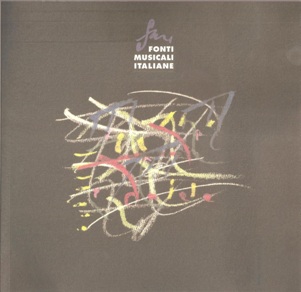Il commercio di edizioni e manoscritti musicali tra Italia e Germania nel primo Ottocento (1800-1830)
Abstract
All’inizio del XIX secolo le case editrici musicali tedesche perseguono politiche di espansione sui mercati esteri, sia al fine di trovare nuovi sbocchi commerciali che per procurarsi articoli non reperibili in patria. Negli stessi anni sorgono in Italia numerose imprese attive nel settore musicale, in grado di offrire una sponda ai partner stranieri desiderosi di avviare relazioni d‘affari. In tale contesto si sviluppa un regolare, intenso commercio di edizioni e manoscritti musicali tra Italia e Germania. L‘autore ne ricostruisce strategie e meccanismi, utilizzando come fonti la corrispondenza di alcune grandi case tedesche (Breitkopf & Härtel, André, Simrock, Hoffmeister & Kühnel, Kühnel e Peters) e, in misura minore, annunci di editori italiani sulla stampa dell‘epoca.
Nella prima parte l‘articolo evidenzia il ruolo di Lipsia come punto nodale del traffico internazionale di musica tra Italia e Nord Europa. Analizza quindi i processi di attivazione e gli aspetti economici dei rapporti negoziali, organizzati secondo due modelli fondamentali: commercio “à condition“, con cui il corrispondente assume la gestione di un deposito di articoli musicali che rimane proprietà del grossista; commercio per conto del rivenditore al minuto, che prevede la vendita della merce al corrispondente con alta percentuale di sconto. Viene esaminato anche il caso delle relazioni impostate sullo scambio di musica a stampa o di altre mercanzie, tra cui corde e strumenti. Si descrivono inoltre i modi di spedizione, le vie di transito delle merci, il tipo di repertorio commerciato e le tecniche di marketing.
La seconda parte del contributo si sofferma sull’attività dei singoli corrispondenti italiani (per lo più editori, negozianti di musica e librai) e ne illustra la distribuzione sul territorio (Milano, Venezia, Napoli e Trieste contano nell’ordine il maggior numero di corrispondenti).
I risultati della ricerca mostrano come la diffusione della musica tedesca in Italia nei primi anni dell’Ottocento sia un fenomeno di origine primariamente economico-commerciale, molto più esteso e profondo di quanto non suggeriscano le ricerche condotte nell’ambito delle esecuzioni pubbliche e della relativa ricezione. La scoperta dell’intenso traffico di edizioni musicali tra Italia e Germania attesta infine, per la prima volta nella storia del commercio librario, la nascita di relazioni di una certa entità tra le due aree geografiche.
*****
The commerce of musical editions and manuscripts between Italy and Germany in the early nineteenth century
At the beginning of the nineteenth century, German music publishers pursued a policy of expansion abroad for the dual purpose of finding new commercial outlets and of acquiring items so far unavailable on the domestic market. During these early years there was in Italy a flourishing of enterprises active in the field of music and qualified for cooperating with foreign partners wishing to establish business relations. In this context, a regular and intensive commerce of musical editions and manuscripts developed between Germany and Italy. In this paper the author reconstructs the strategies and mechanisms of this trading, using as sources the correspondence of some of the leading German publishing houses (Breitkopf & Härtel, André, Simrock, Hoffmeister & Kühnel, Kühnel & Peters) and, on a minor scale, the announcements of Italian publishers in the press of that time.
In the first part of the paper, the role of Leipzig is evidenced as the point of confluence of international commerce in music between Italy and North Europe and the activating processes and economic aspects of the business transactions are then analyzed following two fundamental models: a) trade “à condition”, in which the correspondent assumes responsibility for managing and selling a stock of musical items which remains the property of the wholesaler; b) trade on account of a retailer which foresees the sale of the goods to the correspondent with a high cash discount. The case is also examined of business relations based on the exchange of printed music or of other goods, including strings and instruments. In addition, the description is given of shipment methods, conveyance routes, type of goods traded and marketing techniques.
The second part of the paper deals with the activities and territorial distribution of Italian correspondents (mainly music publishers, music dealers and booksellers); Milan, Venice, Naples and Trieste (in that order) account for the major number of correspondents.
The results of the research show that the diffusion of German music in Italy during the early years of the nineteenth century is essentially a phenomenon of economic-commercial character, far more extensive and in-depth than was suggested by the research on public performances and their audiences. Finally, the discovery of the intensive trade of musical editions between Italy and Germany substantiates, for the first time in the history of the book trade, the existence of relations of a certain importance between the two geographical areas.
Downloads
Published
Issue
Section
License
© CIDIM
Tutti i diritti riservati


